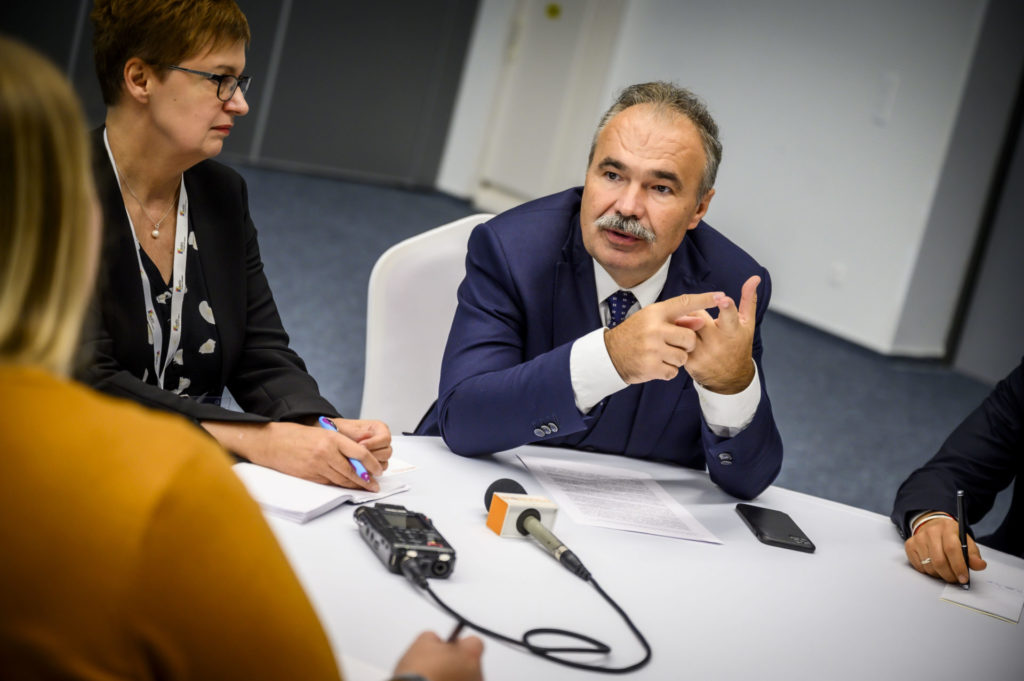News
Ag Minister Nagy highlights Hungarian Agriculture

Hungary’s ag industry is diverse and there are opportunities for farmers in the country to succeed.
During an interview on a recent trip to Hungary, the Minister of Agriculture István Nagy provided Brownfield Ag News an overview of the country’s agriculture industry.
Hungary has more than 5 million hectares, or more than 12 million acres, of agricultural land and about 82 percent of that is used as arable land.
More than 116,000 farmers have less than 10 hectares and the average farm size is around 25 hectares.
Because of that, Nagy says the country can’t compete with countries like Ukraine that grow crops on farms with more than tens of thousands of hectares.
“So therefore, Hungarian agriculture is much more quality-oriented rather than quantity-oriented,” he says.
Livestock production is a big part of the country’s agriculture industry.
He says a farm typically has between 500-1,200 animals, with dairy cattle, poultry, and hogs being dominant in the Hungarian livestock industry.
“We have a really important role in preserving the genetic stock of animals and we have gene banks,” he says. “So, in our nature parks we preserve animals that are native to the land and have been here since ancient times— the Hungarian Grey cattle, Racka Sheep, and Mangalica pigs.”
As for crops, Hungarian farmers grow non-GMO corn, soybeans, potatoes, and more. Nagy says it’s in the constitution that genetically engineered crops cannot be grown in the country.
“With this we discovered a market opportunity that ensures our long-term security,” he says. “We can’t compete with large biotechnology companies like the ones in the U.S. so instead we go back to well-proven genetic stock we have here locally in Hungary and there is demand and interest for this globally.”
He says farmers are able to get a premium and uses bio-ethanol as an example.
“We can sell bio-ethanol made with non-GMO corn at a higher price,” he says. “So, considering our economic scale, this is the most profitable approach.”
There are challenges in the industry and Nagy says he is hopeful it will be possible to level the playing field for the Hungarian agriculture and food industries during the seven-year-cycle of the Common Agricultural Policy (CAP) of the European Union.
“Until now, we added 17 percent from national funding to supplement the rural development funding we received under the CAP program,” he says. “That 17 percent has now been increased to 80 percent – the absolute maximum amount. We are the only Member State providing the highest subsidy for rural development from national funding within the European Union. As a result, we have three times as much in funding as we had in the previous seven-year period. This will allow us to catch up with competitors and hopefully be ahead of them.”
Nagy says this is important for farmers as there is a generational change taking place in the industry. He says the current population of farmers is aging and it’s important to use modern technologies to attract and retain a younger generation of farmers.
“This includes precision technologies, satellite technologies, and ICT driven machinery and equipment which represent attractive means to younger people,” he says. “It makes working lighter and easier for them and on the other hand it facilitates the production of high-quality products.”
Climate change is a universal challenge and a national tree planting program, supported by the Ministry of Agriculture, is aimed at helping address the issue.
“We set the target of increasing the wooded areas within the country from 22 percent of the total territory of the country to 27 percent,” he says. “We came up with an idea that incentives and encourages farmers that cultivate land that’s not fertile to plant trees and forests instead.”
Brownfield interviewed Nagy recently following a meeting he held as the current holder of the Presidency of the Visegrád Four group with ag leaders from seven central European countries during the National Agriculture and Food Exhibition and Fair in Budapest.
Audio: Hungarian Minister of Agriculture István Nagy

Add Comment